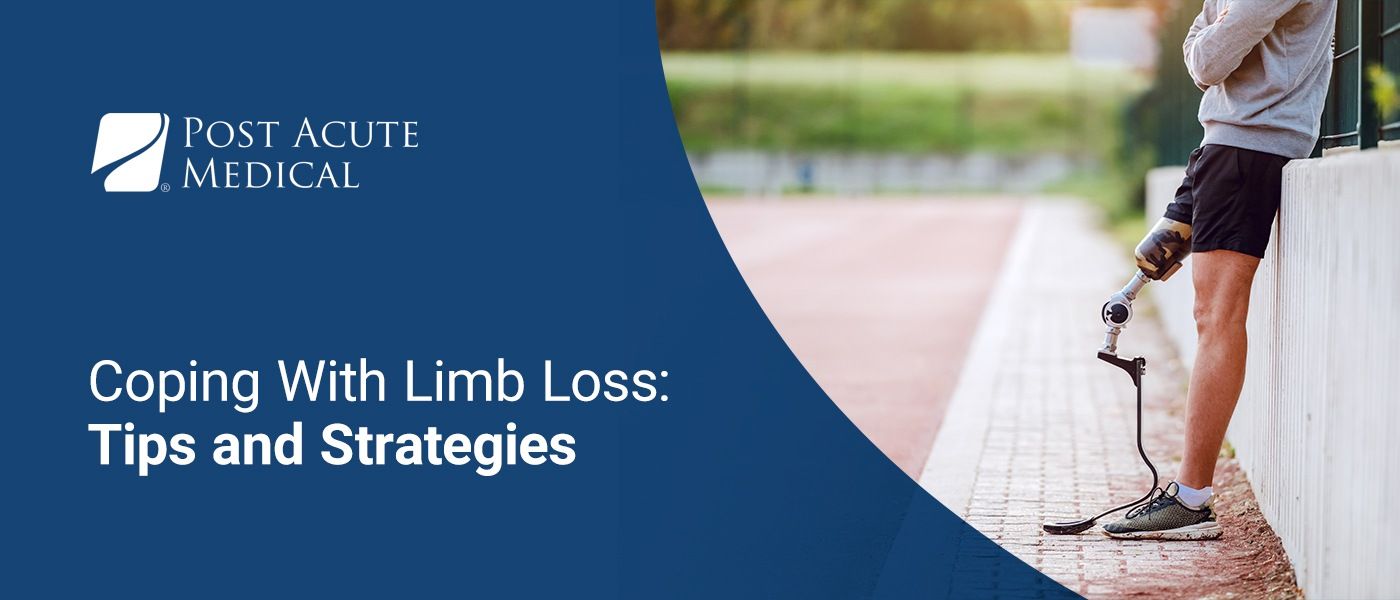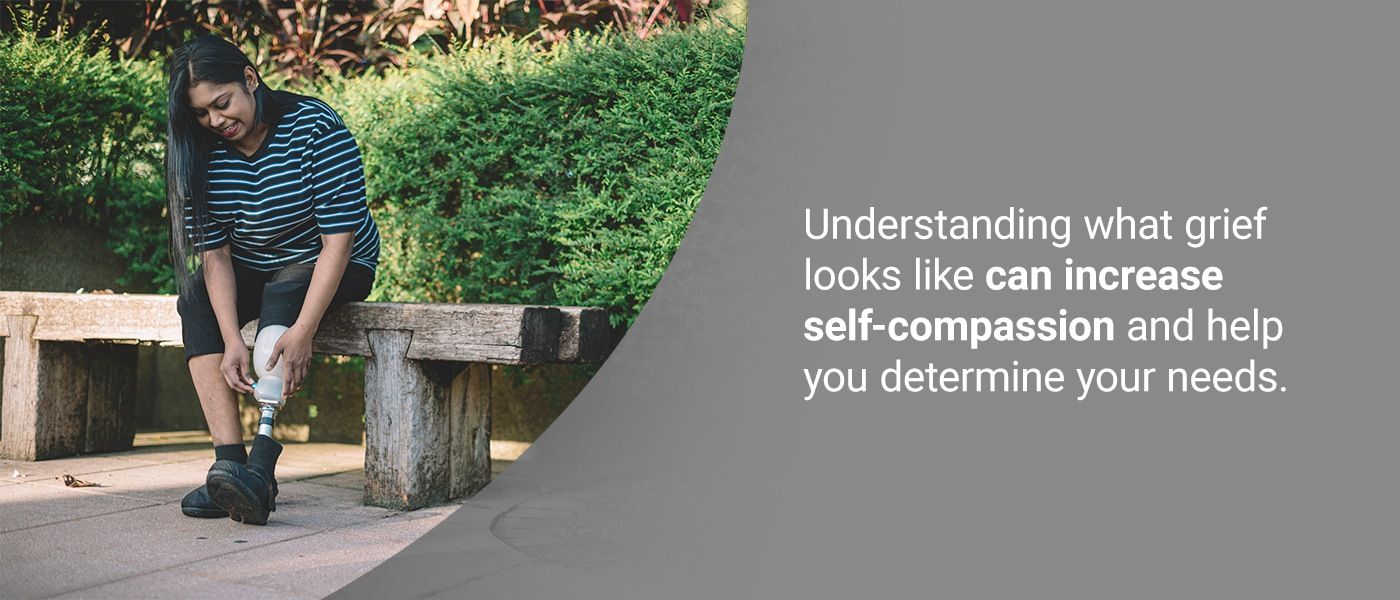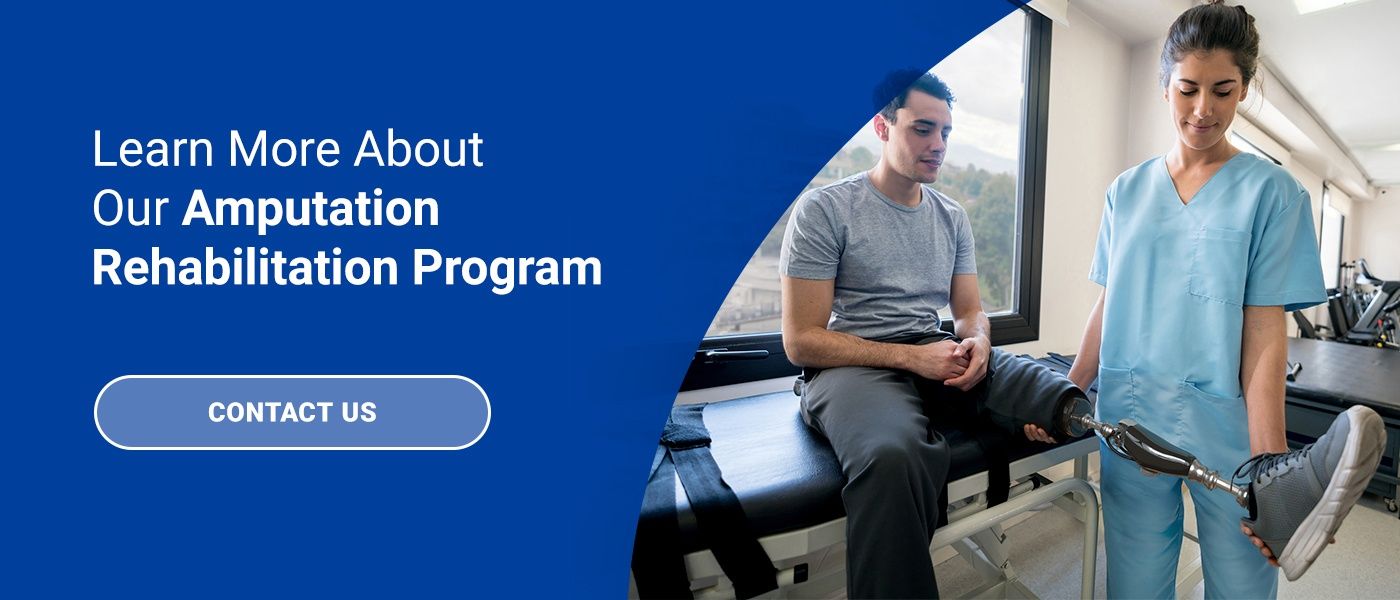Coping With Limb Loss: Tips and Strategies

Roughly 2 million Americans live with limb loss, and every year, about 185,000 people experience an amputation. Limb loss is a stressful and devastating experience that affects every aspect of a person's life, including their relationships, career, dreams and emotional well-being. It is common for amputees to experience grief, depression and anxiety after a surgical amputation or traumatic event.
Although living with an amputation presents challenges, positive coping strategies can help amputees find a new path in life and overcome difficult emotions. If you or a loved one have recently undergone an amputation, know that many people live a fulfilling life once they adapt to changes. The first step to healing from limb loss is acknowledging your feelings and the various factors impacting your mental health. From there, you can apply coping strategies that work for you.
The Emotional Effects of Amputation
An amputation significantly affects a person's life and psychological state for several reasons. First, the amputee must handle the sensation of losing a limb and a loss of function. They may experience challenges with mobility and need to depend on others until they adapt and regain independence. Some patients experience phantom limb pain, which can negatively impact their quality of life.
Amputees must also cope with the emotions attached to a new body image. These factors combine to produce complex thoughts and feelings. According to the Eurasian Journal of Medicine and Investigation, patients with amputations frequently experience decreased self-esteem and a fear of the future early in the healing process. However, all of these emotional effects can be addressed and improved.
Social Factors That Impact the Emotional Effects of Amputation

Although limb loss commonly triggers grief and depression, not all amputees experience these effects. Everyone copes with amputation in their own way, and certain factors influence each person's reaction. The following factors can significantly impact how someone copes with limb loss:
- Age: A person's age impacts how they psychologically cope with an amputation. Children and adolescents may adapt to an amputation more quickly than adults, but face greater emotional challenges related to their identity, acceptance and rejection. Adults are typically more vulnerable to difficult emotions associated with daily functioning, financial matters and family relationships. Any age can experience depression, anxiety or post-traumatic stress disorder after limb loss.
- Personality: Different personalities react to limb loss in different ways. For example, people who tend to experience depression or anxiety may have more difficulty coping with limb loss than others. Likewise, highly self-reliant individuals might struggle more with amputation than someone comfortable accepting help from others.
- Occupation: If a person's career involves motor skills, they are more likely to experience tough emotions related to limb loss. If someone did not rely on the limb to perform their work, they may experience less emotional impact.
- Support: Support from friends, family and a medical team is critical during recovery from an amputation. According to a HealthMED review, a lack of social support is correlated to high levels of anxiety and depression in patients with lower-limb amputations. People with sufficient social support experience lower levels of anxiety and depression. Individuals with an amputation who need more support might consider connecting with others affected by limb loss.
Medical Factors That Impact the Emotional Effects of Amputation
Various medical factors also impact how someone copes with an amputation. These factors include:
- Current condition: People experience limb loss differently depending on their overall condition. For example, a patient who had mobility issues before a lower-limb amputation may be less emotionally impacted than an athlete with a recent amputation. However, a healthy patient who lost a limb due to a traumatic event may adapt physically to the change better than a patient with chronic illnesses.
- Reason for the amputation: A person who loses a limb due to combat or an accident will experience the amputation differently than a patient who chooses surgical amputation. A patient suffering from peripheral vascular disease, for example, may accept the surgery and view it as a form of relief.
- Preparation time: Patients who plan an amputation have time to go through grief stages before they experience limb loss. They can meet with others who've undergone the procedure to set realistic expectations and gain a sense of hope. Individuals who experience an accidental amputation do not get to grieve first. They may be more prone to experiencing post-traumatic stress disorder.
- Complications: If patients undergo a poorly performed surgery or traumatic amputation, they may be more likely to experience complications like pain or an infection. These factors can impact rehabilitation and a person's emotions.
- Prosthesis application: Individuals who receive a prosthetic limb shortly after the amputation typically experience less emotional distress than someone who does not get a prosthesis. Prosthetic rehabilitation helps patients adapt to a new body image and focus on future goals rather than the loss.
- Vocational rehabilitation: Vocational rehabilitation can be a critical aspect of a person's recovery. Through vocational rehabilitation, patients might learn new skills or get assistance finding a meaningful job. It can help the person resolve financial stress, rebuild self-esteem and decrease depression symptoms.
Amputation and Grief

Losing a limb can trigger grief in the same way as losing a loved one. Grief is how people naturally react to losing anything or anyone they love. It encompasses various stages and emotions as a person processes the loss and adapts to changes. As time goes on and the person adjusts to a new life, the pain of grief lessens.
Still, grieving is difficult, and everyone experiences grief in their own way. Some people will go through all the stages of grief. Others may only experience a few. The grieving process also does not occur in a particular order, nor can it be rushed. Understanding what grief looks like can increase self-compassion and help you determine your needs. Here are the different stages of grief and how they relate to limb loss:
- Denial: Denial helps reduce the pain of a significant loss. It may feel like numbness, shock or confusion. People in the denial stage may avoid thinking or talking about the loss. For example, a patient about to undergo a surgical amputation might refuse to talk about the impending procedure or answer questions. Someone who experienced an amputation in a traumatic event might be in a state of disbelief that the loss occurred.
- Anger: People may feel angry as they start to release emotions related to their loss. During the anger stage, a person might feel frustrated, resentful, irritable or pessimistic. Patients might express anger toward doctors or nurses after amputation for "tricking" them into getting surgery, for example.
- Bargaining: Bargaining can feel like guilt, fear and anxiety. Someone in the bargaining phase might dwell on the past and wish they did something different. They will try to think of ways to avoid the pain they are feeling or anticipating. For instance, a patient might try to postpone their surgery despite it being necessary for their health.
- Depression: At some point during the grieving process, a person realizes bargaining is not an option. They start to look at the situation realistically and feel the intensity of their loss. Depression is characterized by sadness, despair, hopelessness and disappointment. Someone who is depressed might experience decreased energy and withdrawal from others.
- Acceptance: When someone reaches acceptance, they no longer fight reality or try to bargain for something different. They may still experience sadness, but they are less likely to feel anger or denial about their loss. They may be able to live in the present moment, cope with difficult emotions in a healthy way, and communicate honestly about how they feel. Individuals with an amputation may not reach the acceptance stage until they are in a rehabilitation program.
Coping With Amputation Depression and Anxiety
Experiencing sadness and a depressed mood is often part of the grieving process for individuals with an amputation. It is common for patients to feel depressed, particularly if limb loss happened recently. According to a 2018 review, studies have found that rates of depression symptoms decline during the years following an amputation.
When depression does not get better or becomes overwhelming, it is time to reach out for professional help. Symptoms of major depression include:
- Persistent feelings of sadness, worthlessness, guilt or hopelessness
- Thoughts of suicide or self-harm
- Difficulty sleeping or oversleeping
- Loss of interest in hobbies or activities you once enjoyed
- Significant weight loss
- Fatigue or lack of energy
Know that major depression is highly treatable. Psychotherapy, antidepressants and physical rehabilitation can help relieve depression symptoms after an amputation. There are also things you or a loved one can do at home to manage depression, such as:
- Spending time with supportive friends and family and talking about your feelings.
- Setting realistic expectations and accepting that your mood may improve gradually rather than immediately.
- Trying to exercise and eating a healthy diet.
- Learning about depression so you can understand what you are going through.
- Waiting to make major decisions until you feel better.
- Practicing deep-breathing exercises to relax your body and mind.
- Focusing on your assets rather than the loss.
- Asking others for help when you need it.
- Getting in touch with a support group.
- Replacing negative thoughts with positive ones.
- Remembering you are not alone.
Anxiety is also a common side effect of an amputation or any stressful, traumatic event. Like depression, anxiety is often strongest in the months following an amputation and declines over time. Anxiety usually relates to changes in body image, identity and social roles. Patients with anxiety might experience symptoms like insomnia, fear or trouble controlling worrying. If anxiety disrupts your life and feels difficult to control, it is best to speak to your doctor. Staying active and keeping in touch with caring people can also help calm anxious feelings.
How to Cope With an Amputation

It takes time to process the emotions you feel and adapt when experiencing an amputation. It is important to remember that difficult feelings will decrease over time. In the meantime, surrounding yourself with supportive people and trying different strategies can help you cope with the loss. Here are a few positive ways to cope with limb loss:
1. Acknowledge Your Feelings
Acknowledging your feelings can help you heal and move through the grieving process. Know that it is OK to feel angry or sad after your loss. You might experience a vast range of emotions until you adapt to the changes in your life. Allow yourself to feel all the different emotions that arise rather than force them aside. If you feel stuck in an emotion, consider speaking with a mental health professional.
2. Express Negative Emotions
It is better to express negative emotions than ignore them. You might write about your feelings in a journal, paint a picture or play a song — whatever appeals to you. The point is to let your emotions out so you can deal with them in a healthy way.
3. Connect With Others
Connecting with others can help prevent a sense of isolation. It is essential to contact friends and family members who are good listeners and optimistic. You might also join a support group to connect with people who have gone through what you are going through. By sharing your experience with supportive people, you can learn new coping strategies and better understand your feelings.
4. Find a Purpose
Try to find something that makes you excited to start each day. You might focus on a career change, pick up a new hobby or volunteer in your community. No matter how big or small, having a purpose is a way to lead a satisfying life.
5. Set Meaningful Goals
Setting realistic and meaningful goals adds purpose and structure to life. When you have dreams you are working towards, you may also experience a boost in self-esteem. During rehabilitation, your therapy team can help you establish goals that are important to you.
6. Create a Daily Routine
Having a daily routine is comforting and can help you focus on goals rather than dwell on the past or negative emotions. A routine can also help keep you motivated. Try to include something physical, creative and social in your daily routine. For example, you might exercise, engage in a hobby and contact a friend every day. Make sure your routine includes self-care and doing things you love.
7. Embrace Optimism
Keeping a positive attitude can help people cope with limb loss. Focus on the things you can do and ways you have grown since the loss. Many individuals grow psychologically after an amputation. For example, a person with an amputation may experience more motivation to pursue their goals, greater resilience and improved coping skills. Staying positive does not mean you need to ignore your feelings. Instead, it is a way to focus on your strengths and move forward in life.
Avoiding Maladaptive Coping Styles
Maladaptive coping styles can be signs that a person is not adjusting to the amputation well. While it is not easy for anyone to cope with limb loss, maladaptive coping styles can prevent individuals from healing. Here three different maladaptive coping styles:
- Overcompensation: Overcompensation is behaving in a way that is opposite to how you feel. Individuals with amputations might overcompensate by refusing help even if they need it.
- Avoidance: Avoidance means a person changes their behavior to avoid thinking about or dealing with a problem. Avoidance coping strategies may include isolating oneself from others or engaging in addictive, self-soothing activities like substance abuse.
- Surrender: With the surrender coping style, a person allows themselves to depend on others beyond what is needed. For example, someone might refuse to enter rehabilitation and demand a great level of care instead.
If you or a loved one struggles with maladaptive coping styles, speaking with a therapist can help you develop more effective, healthy ways of managing your emotions. It is never too late to replace negative thinking patterns with ones that promote growth.
Learn More About Our Amputation Rehabilitation Program
Coping with limb loss is challenging. However, with rehabilitation and positive coping strategies, you can enjoy an improved quality of life. At Post Acute Medical, our dedicated clinicians are ready to develop an individualized treatment plan for your needs and provide ongoing support.
Our Amputation Rehabilitation Program aims to help patients reach their highest level of independence. Through our program, you will receive personalized care for your physical and emotional needs, including physical and occupational therapy, psychology services and a prosthesis evaluation. To learn more about our program for amputees, contact a Post Acute Medical rehabilitation center today.
